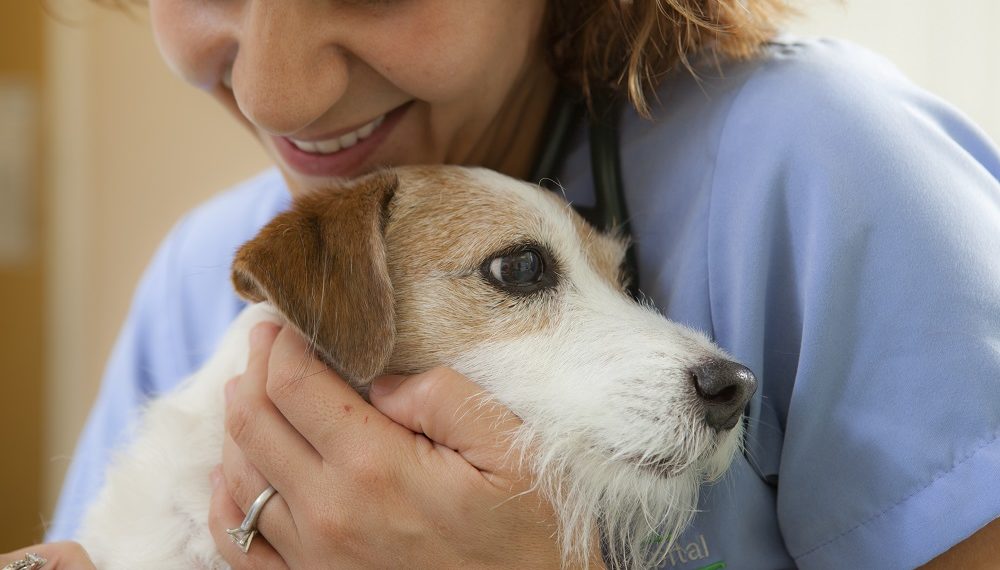Apr 27, 2020

A cancer diagnosis is always scary, especially when your four-legged best friend is involved. Your first instinct is to gather information from every source, and friends and family will likely add their thoughts. Unfortunately, misconceptions abound, and many people apply what they know about human cancer treatment to pets, when this is no time for misinformation. We are setting the facts straight, so you can refer to accurate information when making important decisions about your pet’s cancer treatment journey.
You likely have heard the phrase, “Age is just a number.” We base our recommendations about cancer treatment on your pet’s overall health status, rather than her age. Although any pet can develop cancer, it is more common in older pets, and treatments are developed with that in mind. Our oncology team will perform a panel of tests, including blood work, X-rays, and ultrasound, to assess the health of your pet’s various body systems, and formulate a treatment plan that best fits her health status. Regardless of age, if your pet has health concerns that make one cancer treatment unsuitable, our board-certified veterinary oncologist can devise a plan that uses other treatment methods. For example, if high blood pressure, heart disease, or kidney failure make anesthesia risky, chemotherapy or radiation can be prescribed, instead of surgical excision.
While chemotherapy is an important component of many cancer treatment protocols, other treatments are also available. Our oncologist often formulates multimodal treatment plans to attack cancer from multiple angles. For example, many tumors can be surgically excised, and then chemotherapy administered, to kill cells that may have spread from the original site. If complete excision is not possible, radiation and chemotherapy are often used to shrink or eliminate the cancerous tissue that is left.
Advancements in veterinary medicine are typically right on the heels of human medicine, and oncology is no exception. Many cutting-edge cancer treatments used in human hospitals are also now available to pets. Some treatments involve harvesting a pet’s own immune cells, replicating and programming them to attack cancer cells, and infusing them back into the pet to amplify her immune response to cancer. Other treatments involve sequencing tumor cells’ DNA, and identifying mutations that can be targeted by specific chemotherapy medications. This allows for more targeted treatment, as opposed to administering chemotherapy medications that indiscriminately attack all rapidly growing cells in a pet’s body.
Human chemotherapy drugs are often described as “poison,” particularly when they cause debilitating side effects. A variety of chemotherapy drugs are available for people and pets, and each approaches cancer treatment differently. Some medications attack all rapidly dividing cells, which kills cancer cells, but can also affect normal rapidly dividing cells, such as blood, hair follicles, and intestinal lining cells. Other chemotherapy drugs work by altering cancer cell DNA so the cells cannot replicate, and the cancer cannot grow. Still other types interfere with proteins that cancer cells need to multiply.

The good news is that pet chemotherapy doses are significantly lower than human doses, and typically cause little to no side effects. Pets rarely experience the fatigue, nausea, vomiting, and diarrhea that commonly affect people taking chemotherapy medications. If pets do develop side effects, they can typically be managed with medications at home, or another chemotherapy medication can be chosen. Pets do not lose their fur during cancer treatment, as most breeds do not have constantly growing hair, like humans.
Our goal during your pet’s cancer treatment is for her to live her life as normally as possible, with minimal interruptions. Although she may need to visit our hospital for regular assessments and medication injections, patients are not typically hospitalized for treatments. If complications do arise that require hospitalization, which is rare, we will keep your pet’s hospital stay as short as possible.
Different chemotherapy medications have different administration requirements. Many chemotherapy types can be administered orally by you at home, with only occasional hospital visits to assess your pet’s treatment response. Medications that must be injected by our oncology team members are typically administered over a short period of time—approximately 10 to 15 minutes—and we schedule chemotherapy appointments to include any lab tests and health assessments your pet needs, to minimize visit frequency.
Many owners assume that a cancer diagnosis is a death sentence, but that is often not the case. Many cancer types can be cured, or put into remission, so your pet can resume her normal life. If a cure is not possible, treatments can often slow cancer’s progression, and allow you precious more time with your best friend. Treatments can also help manage cancer’s side effects, such as pain, fatigue, and nausea, so your pet is as comfortable as possible during her last weeks or months. Our oncology team will diagnose and stage your pet’s cancer, and then inform you about the available treatment options, and her projected prognosis.
If you have fallen victim to cancer treatment myths, contact us so we can assess your pet’s cancer, and set the facts straight.